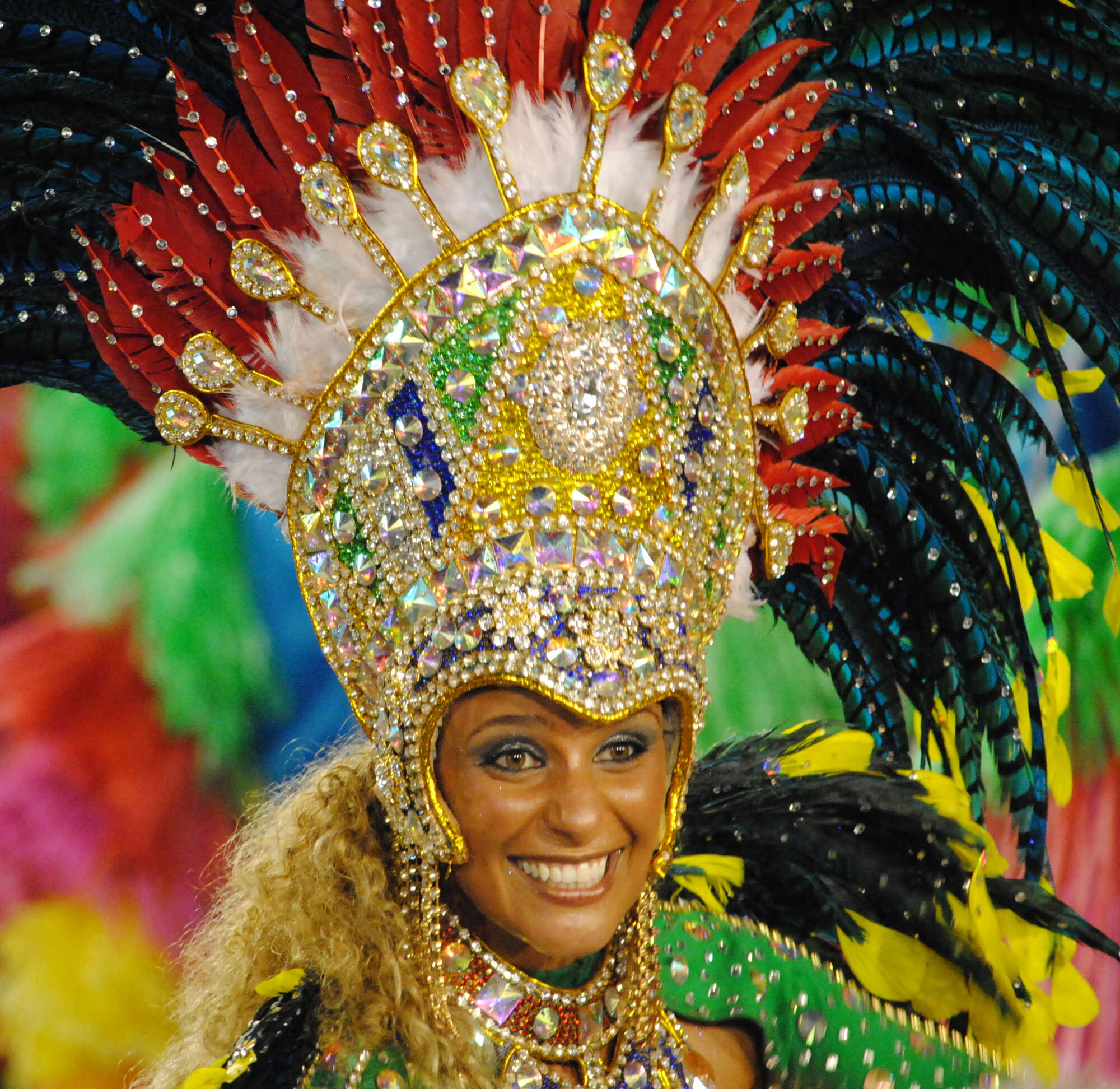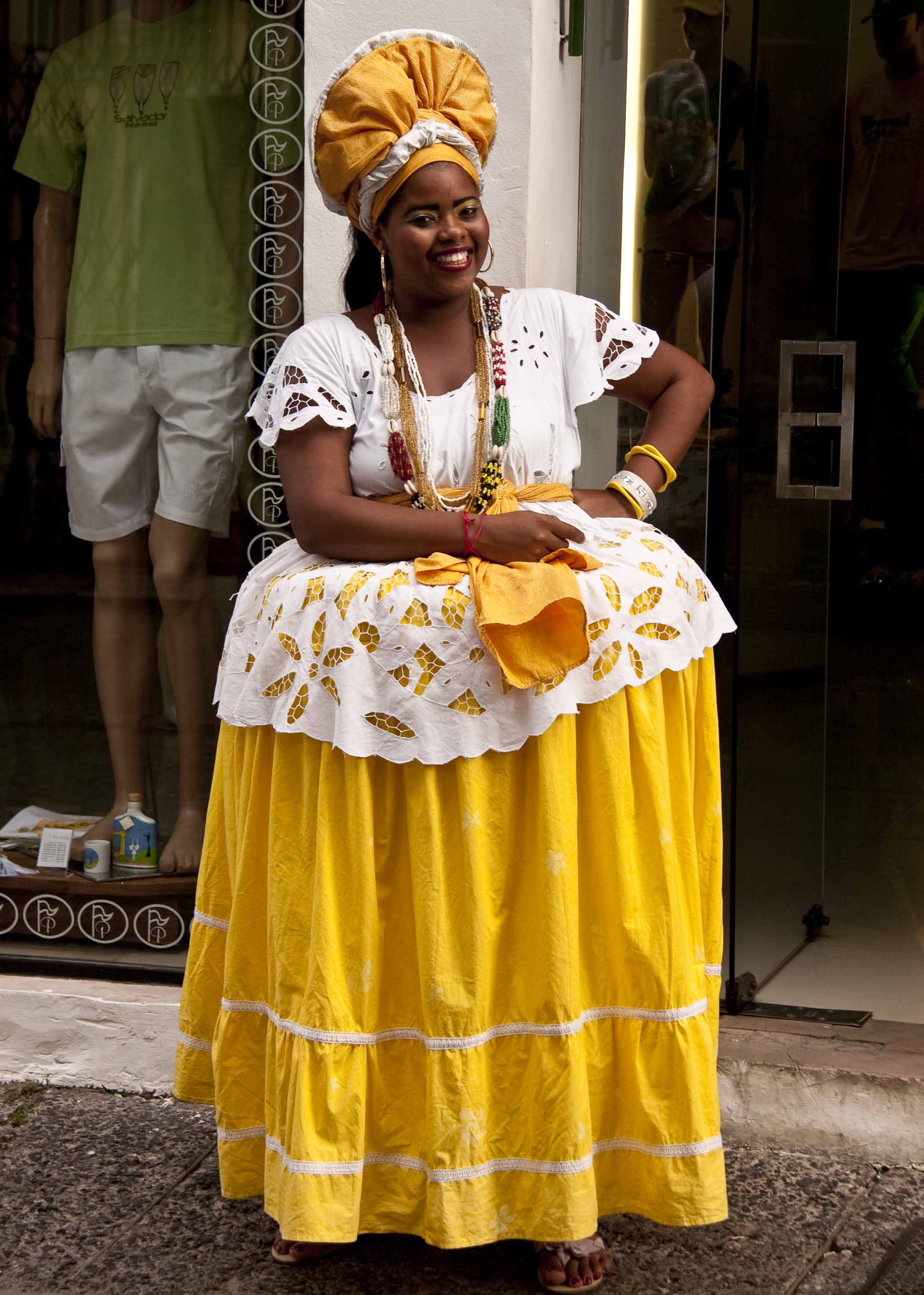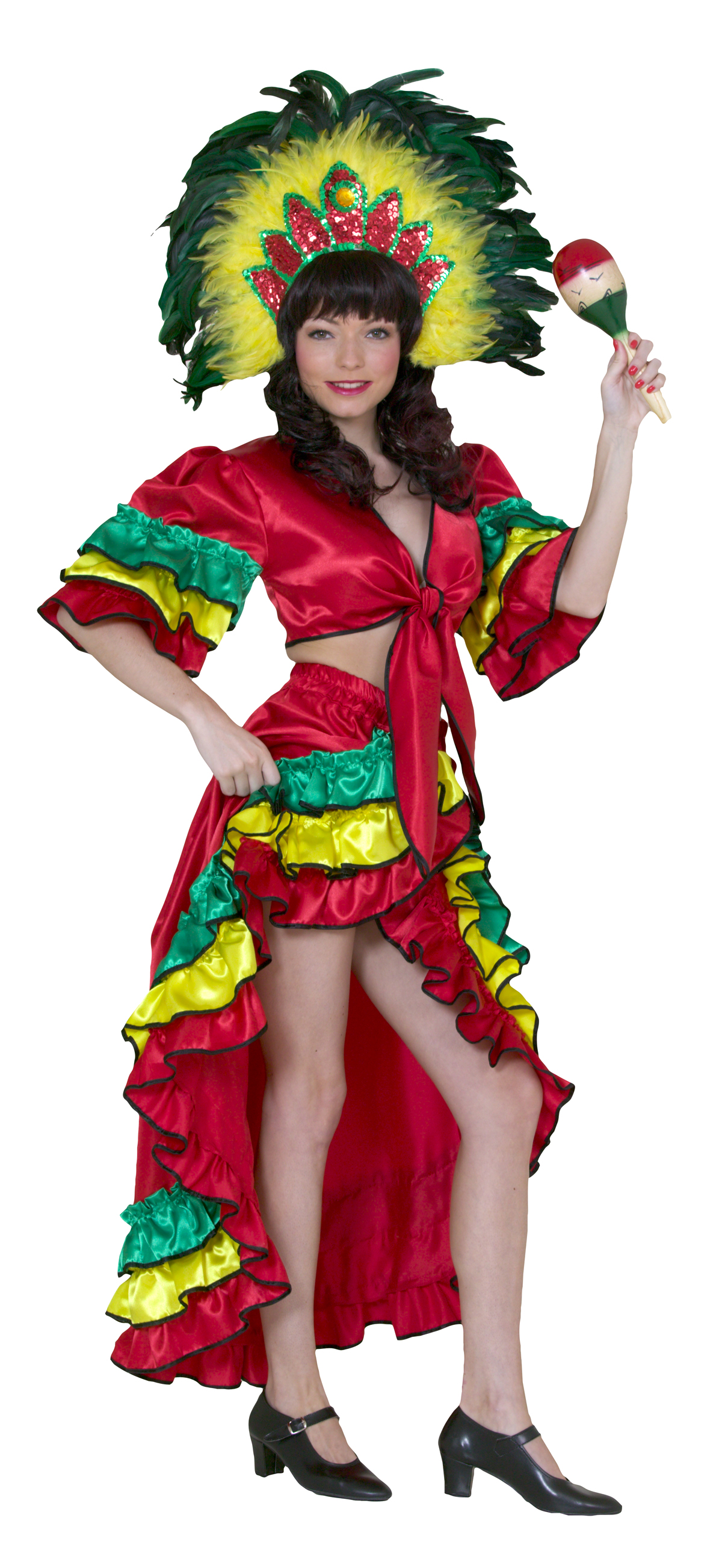
Karaja Brazil, Traditional and Amazon
In general, Brazilian traditional dress is colourful, bright, vibrant, and highly decorated. Fabrics are typical lightweight and breathable due to the high temperatures, although, of course, in cooler mountainous areas heavier fabrics will be preferred.

Brazilian Culture Adapting to Cultural Differences During World Cup Visit
In Rio Grande do Sul, the southern plain region of Brazil, the cowboys (gauchos) wear a distinctive outfit: baggy trousers called bombachas; ponchos, wide straw hats, and leather boots. The cowherds (vaqueiros) in the Northeast region wear a coat, hat, and leather chaps. Southern Brazil
A Pataxo indigenous Brazilian boy Stock Photo
Some of the most iconic styles of traditional Brazilian clothing include the baiana dress, worn by women in Bahia, which features a white blouse, a long skirt, and a colorful headscarf; the Bumba-meu-boi costume, worn by men in the state of Maranhão for the annual festival of the same name, which includes a brightly colored tunic, a hat, and a m.

10 Traditional Brazilian Dances You Should Know About
Fashion Dressing like a Brazilian Woman: Exploring Fashion Trends in Brazil Do you ever wonder what makes Brazilian women so fashionable? Their style appears to be a cross between tradition and modernity, reflecting a rich cultural tapestry.

Women in traditional dress. Salvador da Bahia. Brazil. south americaa Pinterest
By Luciano Sztulman, MD. With Brazilians having such a focus on cleanliness, hygiene, beauty, and appearance, their dedication to stylish fashions should come as no surprise. In fact, the second-largest industry within Brazil today is its fashion industry. But despite its domestic predominance, many of Brazil's native fashion designers had.

The vibrant traditional dress of the Baianas of Salvador de Bahia, Brazil. be_lavie
Traditionally, Brazilian men have worn loose-fitting pants or shorts, along with a shirt and sandals or shoes. Women's clothing is often more ornate, featuring vibrant colors and intricate embroidery. One traditional dress worn by women in Bahia is the baiana dress, which is made from white cotton and features a wide skirt and off-the-shoulder top.

Brazilian Baiana Woman In Traditional Dress Salvador Brazil Stock Photo Download Image Now
Feijoada - black beans stew with meat, which is considered the national dish of Brazil. Barbecue (churrasco) - southern Brazilian influence. Moqueca - consisting of slow-cooked fish in palm oil and coconut milk, tomatoes, bell peppers, onions, and garlic, topped with cilantro. Acarajá with vatapá - African influence.

Bordados Festa junina look feminino, Saia festa junina, Fantasias femininas
Clothing of Brazil. Clothing in Brazil has generally followed European trends since the colonial era, though the nation's indigenous people may still produce and wear their own traditional clothing. Modern, everyday streetwear emphasizes comfort and appearance, with t-shirts, jeans, khakis, shorts, skirts, and dresses all being common.

Brazilian Woman Of African Descent Wearing Traditional Clothes Stock Photo & More Pictures of
Some of the most popular Brazilian traditional clothes include Bahiana, Sereia, Gaucho, Cangaceiro, and many more. SEE ALSO: Which types of food are produced in Brazil? Women's Clothing: From Bahiana to Sereia Brazilian traditional women's clothing is a stunning display of vibrant colors, intricate embroidery, and beautiful fabrics.

Carnival Traditional Brazilian Clothing Galandrina
Until the 1870s, in fact, Brazil was primarily a nation of people of color. In the first national census in 1872 over 60 percent of the population was classified as black or of mixed ancestry. Then a massive wave of immigration from Europe—eventually reaching some 2.5 million—helped shift the racial balance.

Baiana women of Salvador Traditional outfits, Brazil traditional dress, Traditional fashion
World Facts The Culture and Traditions of Brazil The South American country of Brazil has a unique culture shaped by both European and indigenous influences. Learn more about the culture and traditions of Brazil.

Pin on Afro Love Affair The Golden Bronze Empress Collection
Brazil has many unique traditions related to New Year's Eve, from wearing white to bring good luck in the following year (some people wear underwear or accessories in red for love and yellow for money) to jumping seven waves on the shoreline for more good luck. Feijoada on a Wednesday Delicious Brazilian feijoada. | © rocharibeiro / Shutterstock

Brazil Outfits Culture Through Fashion Top 20 Outfits From Around The World Besides good
The beautiful Baiana de Acarajé traditional clothing, an elaborate costume that Baianas (women of Bahia) proudly wear, offers a colorful example of the city's rich, cultural heritage. Here's everything you need to know about Bahia's treasured costume.

Brazil Outfits Culture Through Fashion Top 20 Outfits From Around The World Besides good
The traditional dress in Latin America is so much more than just a costume. It provides a link to the region's history, as well as a portrayal of each countries' national identity. Furthermore, most of Latin American countries shares cultural Spanish (or Portuguese, in the case of Brazil), Indigenous, and African influences

Carnaval do Brasil. A very nice dançarino carnaval brasileiro no Rio de Janeiro. Tours Brasil
The most popular traditional pieces of clothes in Brazil are bombachas pants, baiana dress, poncho, Carmen Miranda costume, and cowboy hat. The bombachas are baggy pants often worn by gauchos - South American cowboys. They are comfortable for riding and look charming. Usually, bombachas are made from cotton.

Brazil Women Dancing In Salvador De Bahia Traditional Clothes Stock Photo Download Image Now
The origins of the Brazilian traditional clothing are European, mostly Portuguese; the country was a Portuguese colony for 322 years, from 1500 to 1822. The indigenous tribes that lived in the area adopted the Portuguese-style clothing and adapted it to their climate and traditions.